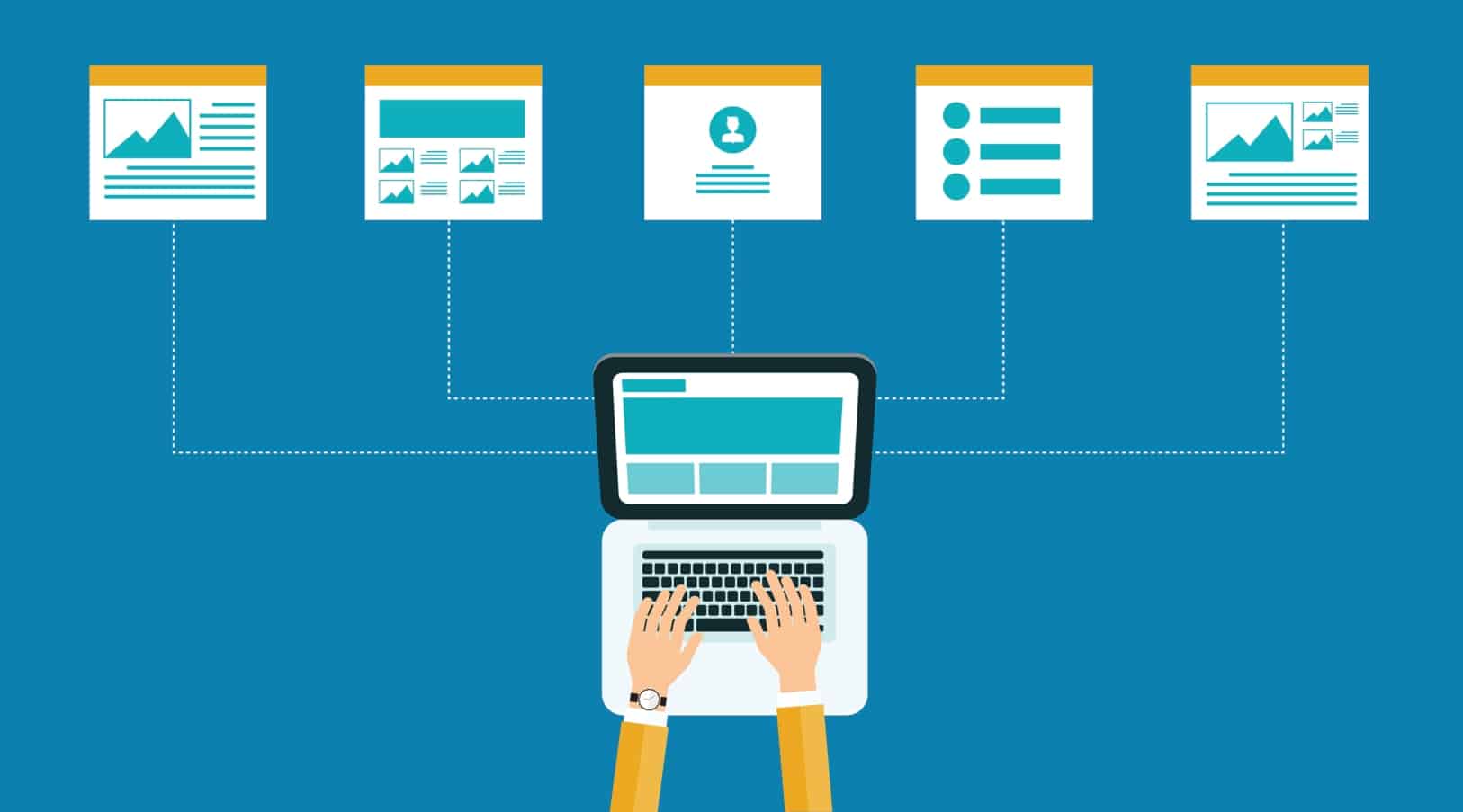UI/UX (User Interface/User Experience) design plays a crucial role in the success of a business in today’s digital landscape. It focuses on creating intuitive and visually appealing interfaces that enhance the overall user experience.
Here are several ways in which good UI/UX design can benefit a business:
1. Increased User Satisfaction
2. Higher User Retention
3. Competitive Advantage
4. Increased Conversion Rates
5. Cost Savings
6. Enhanced Brand Perception
1. Increased User Satisfaction
A well-designed user interface enhances the overall user experience, making it easier and more enjoyable for users to navigate and interact with a product or service.
Intuitive layouts, clear navigation, and thoughtful interactions contribute to a positive user experience, leading to increased user satisfaction and engagement.
To increase user satisfaction in UI/UX design, you can follow several best practices and strategies.
1. Understand your target users: Begin by gaining a deep understanding of your target audience. Conduct user research, interviews, and surveys to identify their needs, preferences, and pain points.
2. Create user personas: User personas are fictional representations of your target users. They help you empathize with and design for different user groups.
3. Simplify the interface: A cluttered and complex interface can confuse users and hinder their ability to achieve their goals.
4. Provide clear and consistent navigation: Navigation plays a crucial role in user satisfaction. Ensure that your interface has intuitive navigation menus, breadcrumbs, search functionality, and clear calls to action.
5. Optimize loading times: Slow loading times frustrate users and can lead to high bounce rates. Optimize your UI/UX design to ensure fast loading speeds.
6. Use effective visual hierarchy: Create a clear visual hierarchy that guides users through the interface and emphasizes important elements.
7. Prioritize mobile responsiveness: As mobile usage continues to grow, designing for mobile devices is essential. Ensure your UI/UX design is responsive and adaptable to different screen sizes.
8. Incorporate user feedback: Continuously seek user feedback throughout the design process and even after launching your product.
9. Offer personalization options: Users appreciate personalized experiences. Provide customization options such as theme selection, font size adjustment, or content filtering, allowing users to tailor the interface to their preferences.
10. Test and iterate: Regularly test your UI/UX design with real users to identify any usability issues or areas for improvement.
2. Higher User Retention
A positive user experience is directly linked to user retention. When users have a seamless and enjoyable experience with a product or service, they are more likely to stay engaged, return, and become loyal customers.
Increasing user retention in UI/UX design involves creating an engaging and valuable experience that keeps users coming back
Here are some strategies to help improve user retention:
1. Understand user needs and expectations: Thoroughly understand your users’ needs, motivations, and expectations through user research.
2. Streamline onboarding experience: The onboarding process is critical for user retention. Make it easy for new users to get started by providing clear instructions, guiding them through key features, and offering interactive tutorials or tooltips.
3. Focus on usability and intuitive design: Users are more likely to continue using a product if it’s easy to use and navigate. Ensure your UI/UX design is intuitive, with clear labeling, logical information architecture, and easily discoverable features.
4. Deliver a seamless and responsive experience: Users expect a consistent experience across different devices and platforms.
5. Personalization and customization: Offer personalization options that allow users to tailor their experience to their preferences. This can include customizable settings, saved preferences, or personalized recommendations.
6. Regularly update and improve your design: Regularly review and improve your UI/UX design based on user feedback, analytics, and industry trends.
3. Competitive Advantage
In today’s competitive market, businesses need to differentiate themselves from their competitors. A well-designed user interface can be a significant competitive advantage.
A well-designed user interface can be a significant competitive advantage. Users are more likely to choose a product or service that is visually appealing, easy to use, and offers a seamless experience over a poorly designed alternative.
Here are some factors that can contribute to a competitive advantage in UI/UX design:
1. User-Centered Design: Prioritizing user needs and preferences is a key competitive advantage.
2. Seamless and Intuitive User Experience: A competitive UI/UX design offers a seamless and intuitive user experience. It focuses on simplicity, ease of use, and clear navigation to ensure that users can accomplish their tasks efficiently and without confusion.
3. Visual Appeal and Branding: A visually appealing UI/UX design that aligns with the brand identity can create a competitive advantage.
4. Performance and Speed: UI/UX design that prioritizes performance and speed can be a significant advantage. Users value fast-loading pages, responsive interactions, and smooth transitions.
5. Innovation and Unique Features: Introducing innovative and unique features or interactions in your UI/UX design can give you a competitive edge.
6. Mobile Responsiveness: With the increasing use of mobile devices, having a UI/UX design that is optimized for mobile platforms can be a competitive advantage.
7. Personalization and Customization: Allowing users to personalize and customize their UI/UX experience can be a significant competitive advantage.
8. User Feedback and Iterative Improvement: A commitment to incorporating user feedback and continuously improving the UI/UX design can give you a competitive advantage.
4. Increased Conversion Rates
A well-designed user interface can significantly impact conversion rates.
By optimizing the user flow, simplifying the checkout process, and strategically placing calls to action, businesses can guide users towards desired actions, such as making a purchase, signing up for a service, or filling out a form.
Increasing conversion rates in UI/UX design involves optimizing the user experience to guide users toward taking desired actions.
Here are some strategies to help improve conversion rates:
1. Clear Call-to-Actions (CTAs): Ensure that your CTAs are prominently displayed, visually distinct, and use compelling language.
2. Simplify the Conversion Process: Minimize the number of steps and form fields required for users to complete a conversion.
3. Visual Hierarchy: Use visual hierarchy techniques to draw attention to important elements related to the conversion.
4. Persuasive and Relevant Content: Craft persuasive and relevant content that communicates the value proposition and benefits of your product or service.
5. Trust and Security: Build trust with your users by prominently displaying trust signals such as security badges, testimonials, reviews, and guarantees.
6. Mobile Optimization: With the increasing use of mobile devices, it’s crucial to optimize your UI/UX design for mobile.
7. A/B Testing: Conduct A/B testing to compare different variations of your UI/UX design and measure their impact on conversion rates.
8. User Feedback and Usability Testing: Gather user feedback and conduct usability testing to uncover any usability issues or barriers to conversion.
5. Cost Savings
Investing in good UI/UX design upfront can lead to long-term cost savings for businesses.
By conducting user research and usability testing during the design process, businesses can identify and address potential usability issues early on.
Saving costs in UI/UX design can be achieved through various strategies that prioritize efficiency and resource optimization.
Here are some ways to save costs in UI/UX design:
1. Conduct User Research: Investing in thorough user research upfront can save costs in the long run.
2. Plan and Prototype: Proper planning and prototyping before diving into full-scale design and development can save costs.
3. Utilize Design Libraries and Templates: Leveraging design libraries, pre-built UI kits, or templates can save both time and costs.
4. Collaborate and Communicate Efficiently: Effective communication and collaboration among team members can prevent misunderstandings, rework, and wasted time.
5. Iterate and Validate Design: Regularly iterate on your design based on user feedback and usability testing.
6. Optimize Design Documentation: Efficient documentation practices can save time and effort.
7. Use Design and Collaboration Tools: Utilize design and collaboration tools that improve efficiency and streamline workflows.
8. Outsourcing or Remote Design Teams: Consider outsourcing certain UI/UX design tasks or working with remote design teams that offer cost-effective solutions.
9. Continuous Learning and Skill Development: Invest in continuous learning and skill development for your UI/UX design team.
6. Enhanced Brand Perception
The user interface is often the first point of contact between a user and a brand.
A visually appealing and well-designed interface creates a positive brand perception and reflects professionalism and attention to detail.
It’s about creating a positive, consistent, and memorable impression that aligns with your brand’s values and messaging.
Here are some strategies to enhance brand perception:
1. Define Your Brand Identity: Clearly define your brand’s identity, including its mission, vision, values, personality, and positioning.
2. Consistent Branding: Ensure consistency across all brand touchpoints, including your logo, visual design elements, color palette, typography, and tone of voice.
3. Deliver on Brand Promises: Align your actions and customer experiences with your brand promises.
4. Engage and Connect with Your Audience: Actively engage with your audience through various channels, such as social media, content marketing, events, and customer support.
5. Tell Your Brand Story: Craft a compelling brand story that resonates with your target audience. Share your brand’s history, values, and unique selling points.
6. Thought Leadership and Expertise: Establish your brand as a thought leader in your industry or niche.
7. User Experience and Design: Prioritize user experience (UX) and design to create positive interactions with your brand.
8. Build Brand Advocacy: Encourage satisfied customers to become brand advocates. Implement referral programs, loyalty programs, or user-generated content campaigns to incentivize customers to share positive experiences and recommend your brand to others.
9. Collaborate with Influencers and Partners: Collaborate with influencers or strategic partners who align with your brand values and target audience.
10. Adaptability and Scalability: As businesses evolve and introduce new features or expand their offerings, a good UI/UX design ensures adaptability and scalability.
Summary
In short, good UI/UX design is essential for businesses as it enhances user satisfaction, increases user retention, provides a competitive advantage, boosts conversion rates, saves costs, enhances brand perception, and allows for adaptability and scalability. Investing in UI/UX design is an investment in the success and growth of a business in today’s digital-driven world.









